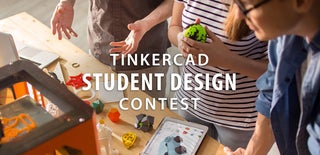Introduction: 3D Printed Lock - Only Home Materials. [CONNECTORS]
This idea came to me when i broke my lock that i use for my gym locker a while back and didnt want to go through the hassle of buying a new one or asking my gym teacher for another. If i had this design back then, i would have save 5 bucks on a new lock. This could also be used as a lock for hobbyist lock pickers and anyone who needs something locked.
Supplies
Filament
3D printer
5mm diameter X 20mm length pen springs
Step 1: Step 1: Print Key Pins
if your printer can handle this, print all 5 at a time, however i found the most effective way of doing this was printing each individually. These are the pins that will go against the key and stay inside the plug when the proper key is turned. These will be pushed against the driver pins that sit on the 5X20mm springs.
Step 2: Step 2: Print Driver Pins
Same with the last set of 5 pins, i would recommend printing each pin individually, but it is up to you. These are the pins that go against the spring and will stay inside the main body when the proper key is turned.
Step 3: Step 3: Print the Plug
The plug is the piece that the key is inserted into and one of the biggest pieces in the lock.it holds the key and driver pins.
Step 4: Step 4: Print the Key
The key is very important to modify slightly, otherwise it will be a skeleton key to every lock of this model. The area that should be modified is the top ridge, whenever an indent or extension is made, make it about 5mm long, and not that deep into the key. Make sure that as the key is indented into, a pin is extended and vice versa.
Step 5: Step 5: Print the Body
The body holds all key components of the lock and is the simplest and yet most complicated to assemble piece of the lock.
Step 6: Step 6: Print the Shackle
The shackle is the piece of this mechanism that actually locks anything, however it wont work without the ball bearings.
Step 7: Step 7: Print the Ball Bearings
The ball bearings are slightly different sizes, as their slots in the body are varied sizes, they shift as the key is unlocked and allow the shackle to move freely.
Step 8: Step 8: Print the Pin-caps
These are the caps that hold the pins and springs in the body without so they can properly keep the mechanism locked.
Step 9: Step 9: Assemble
This is the hardest part of this process, as there are many pieces in tiny spaces. First, insert the key into the plug and the ball bearings into body. Next, insert the shackle and plug into the body at the same time, as to keep the ball bearings in place. Finally, insert the key pins, driver pins, springs, and pin-caps in that order. After this, the lock should be assembled, and the shackle will free itself when the key is properly turned.

Participated in the
Tinkercad Student Design Contest







